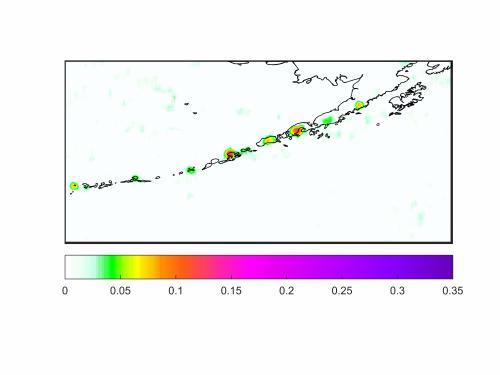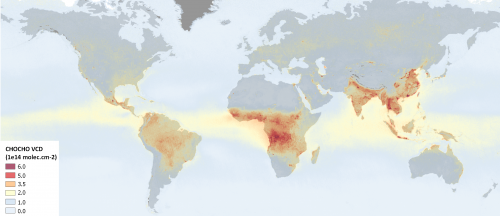The “UV-visible observations” group of BIRA-IASB is not only responsible for the continuous improvement of the TROPOMI operational products for total ozone, sulphur dioxide and formaldehyde columns, but is also involved into the development of new algorithms and products to fully exploit the capabilities of the instrument. Different important developments have been recently achieved.
The COBRA algorithm for an unprecedented detection of weak SO2 sources.
The operational SO2 algorithm has excellent performance to detect high and moderate SO2 emissions, but presents some limitations in case of weak sources. The newly developed Covariance-Based Retrieval Algorithm (COBRA) succeeded in strongly improving this aspect. Adapted from a method used for gas retrievals in the thermal infrared, COBRA reduces the data noise by a factor 2, eliminates the presence of systematic biases and hence significantly lowers the detection limit of SO2 amounts inverted in the ultraviolet.
Applied to two years of TROPOMI measurements, COBRA revealed many new SO2 sources and showed improved comparisons with independent data from the CAMS model or from ground-based MAX-DOAS instruments. Its excellent sensitivity also allowed detecting small SO2 emission changes during the COVID-19 lockdowns in China and India.
Glyoxal measurements for improving our knowledge of Volatile Organic Compounds emissions.
As part of the ESA S5p+Innovation program, which provides the framework for deriving new TROPOMI products, a new algorithm for measuring tropospheric columns of glyoxal has been developed. Glyoxal is a short-lived gas produced by the oxidation of VOCs emitted by natural or human activities. It can also be directly introduced in the atmosphere in case of biomass or fuel combustion processes. Therefore, this product provides crucial information on those emissions.
In addition to its development, validation of the product using independent observations from other satellites and ground-based instruments at various stations worldwide pointed out its good overall performance. This demonstrates the quality of those challenging retrievals and paves the way towards their future operational delivery to the user community.
Validation of TROPOMI OClO observations
OClO concentrations are good indicators of chlorine activation, a key factor in the polar ozone depletion processes. BIRA-IASB also provides essential validation support to the on-going development of an OClO product within the S5p+Innovation activities.


